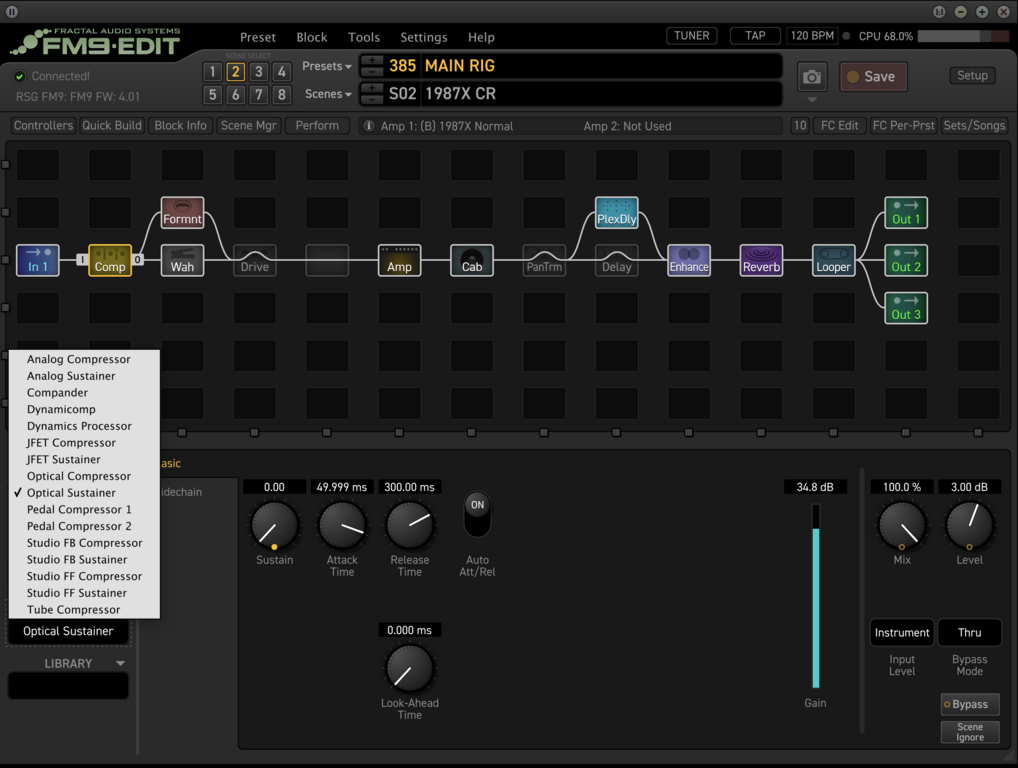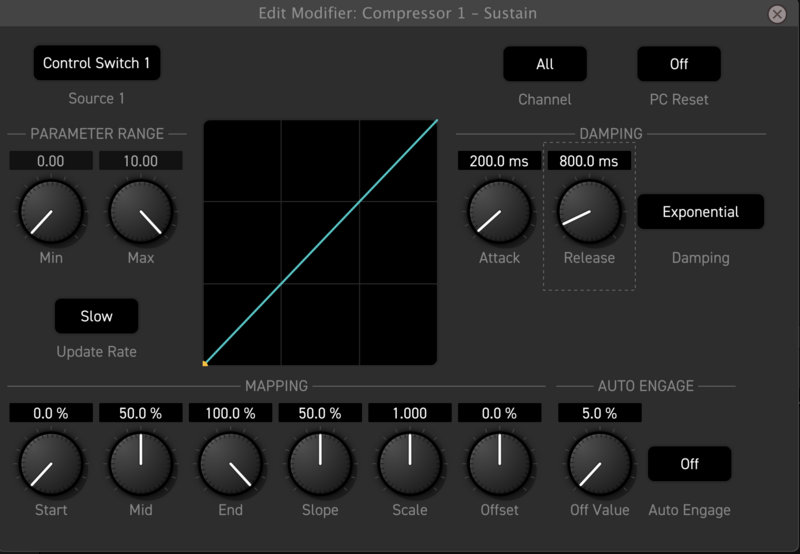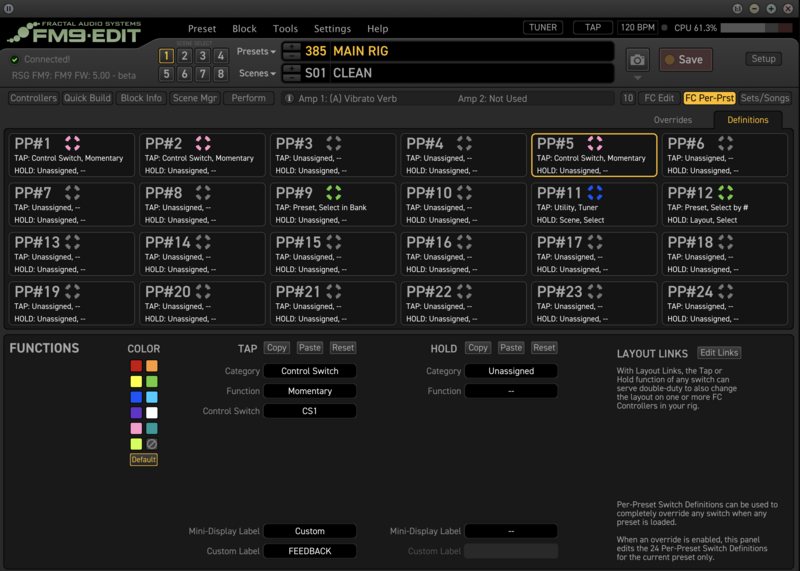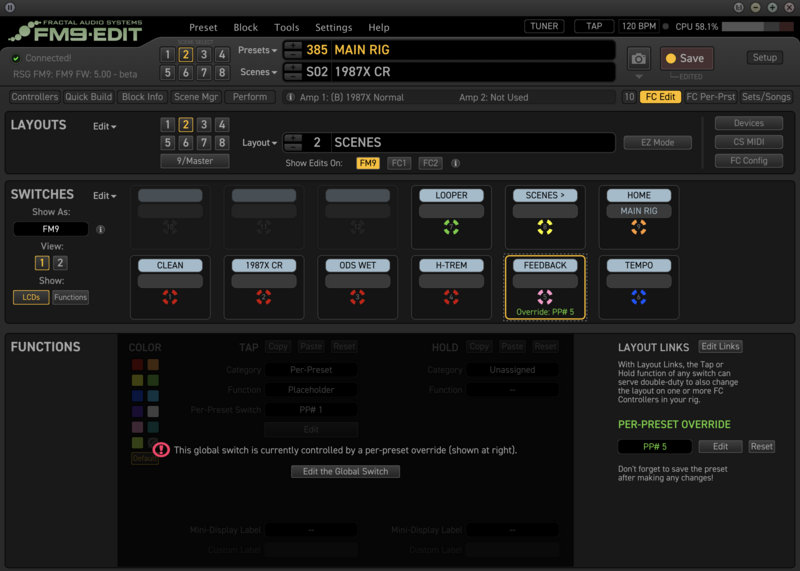Some months ago I created a workaround feedback function with a control switch, per-preset override, and an optical sustainer set up with a momentary modifier. It works great on boosted mid gain, or high gain amps.
Here's how it works:
Note the Optical Sustainer Compressor. See that the sustain knob has a modifier attached to it.
Note the Optical Sustainer Modifier screen. See that source is Control Switch 1, and that attack is 200ms and release is 800 ms.
Note the FC Per-Prst screen. See that Per Preset #5 is selected as a control switch /momentary / CS1. Also see that scribble screen displays a custom label: FEEDBACK. Using a custom label allows the per preset value to transcribe the custom label value to FC-Edit.
Note the FC-Edit screen. See that Per Preset override has been selected for PP#5.
Try this, folks, and see if it works or not. It took a little while trying to ensure the correct control switch was being utilized, some persuasion on my part, and that the workaround delivered as promised.
A key feature is that the CS1 switch be engaged and the guitar aimed back towards your FRFRs. IIRC, there will be folks who might suggest there are nodes of frequency harmonics (locations where 1st, 3rd, 5th, 7th and octave harmonics were concentrated into a narrow point on stage) where feedback is loudest.
Ritchie Blackmore was a master of feedback and would typically map out on stage where various harmonic feedback nodes would occur. I recall watching an old video of DP as Blackmore would slide across the stage gingerly with guitar held aloft with guitar volume dimed. If memory serves me, it was from Strange Kinda Woman.
In my case, my practice room is going to be unlike our open-mic stage, but it may be possible to exact peak feedback if one can determine a node close enough to your FM9's environment to be of value.
The CS1 switch can easily be tested by tap/holding the switch until full feedback engages. Holding the CS1 switch down once full feedback engages will allow sustain to continue until the switch is released. That attack and release can be adjusted to taste depending on how quickly you need the feedback to ramp up and decay.
If for some reason the FEEDBACK CS1 switch doesn't deliver, there may be a CS switch screen I've forgotten to include that positions the CS1 switch on switch 5. It's late now, but remind me tomorrow if the FEEDBACK CS1 switch doesn't work with the above instructions.






